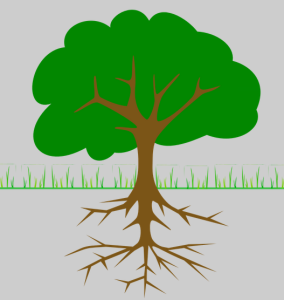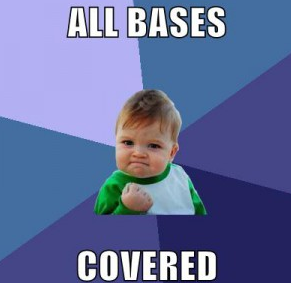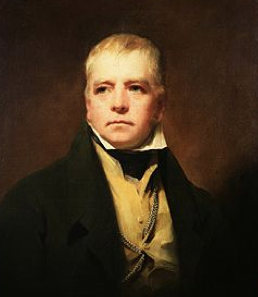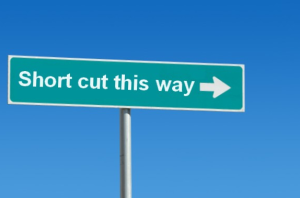Stand Up! Make It Personal: Part 3
Time To Stand
If you have had to deal with addiction in any form with anyone at any time, you no doubt have experienced the feeling, perhaps many times, of being willing to consider any type of treatment that might offer a way out of the nightmare. But when “anything” starts to include options such as invasive brain procedures, as discussed in Part 2 of Make It Personal, we know we’ve reached the point where we must make our Stand against the false narrative and misdirected actions of the addiction industry.
The Root Problem
We can trace the problem back to the early assumption that addiction is the effect of a mesolimbic neurotransmitter dopamine dysregulation, meaning an impairment of the neurotransmitter regulating system of the brain’s reward pathway. As we’ve discussed before, this bel ief is based on researchers finding that people with addiction generally present reward systems that release relatively lower volumes of neurotransmitter dopamine in response to a control stimulus than those among people who do not have addiction.
ief is based on researchers finding that people with addiction generally present reward systems that release relatively lower volumes of neurotransmitter dopamine in response to a control stimulus than those among people who do not have addiction.
Given that a threshold level of NT dopamine must be reached for a person to experience a desired reward or feeling of pleasure, researchers drew the conclusion that people with a lower NT volume response were driven to use substances that provided the intense stimulus needed to reach their reward threshold.
In the mid-1950’s this was as good an explanation of addiction as any, plus it added credible scientific support for the established chronic disease model of addiction that had been introduced twenty years earlier.
The Dilemma
Coming into the ‘60’s with limited information and a growing demand for answers, the fledgling addiction industry faced a dilemma. The location of the presumed brain system dysregulation (impairment) could not be detected objectively, and the NT dopamine volumes could not be measured. Together, this meant that the brain impairment credited with leading to addiction could not be verified let alone treated.
But waves of people were becoming addicted and were seeking treatment. The only detectable thing to treat was their symptomatic behavior, and the only fully developed method aimed at managing the addiction behavior was the Alcoholics Anonymous 12-step method, though increasingly respected, it showed little if any effectiveness.
The High Road?
The industry could have candidly explained that they believed a brain system dysregulation led to addiction, but they were not yet able find objective evidence supporting the belief. They could have advised that until the addiction itself could be detected and examined to determine an appropriate treatment, there was one program in place that might help people to manage the addiction behavior.
That’s what they could have done. Such a forthright position likely would have encouraged scientists to follow their own scientific method and challenge their idea that a brain system impairment leads to addiction. They would have dug deeper to see if the idea held up to scrutiny. Such candor also might have stimulated fresh examination of the data, possibly leading to alternative views of addiction – what it is, what leads to it, and how it develops. Who knows what they might have found?
But the industry did not choose to give us the facts. Instead, based on available information, they declared that a mesolimbic neurotransmitter dopamine dysregulation led to substance use and addiction, a chronic disease that could not be overcome but must be managed daily for life.
From that point forward, addiction research began from this platform premise, and addiction treatment remained narrowly focused on symptom management through various forms of the 12-step method.
Now What?
Fast-forward to today; with trillions of dollars spent, and thousands of lives lost, there is growing acknowledgment that the current methods have failed to slow the growth and devastation of addiction.
Rather than back up to re-examine the established premise of addiction being a chronic disease stemming from a brain system impairment, the industry has continued on its existing path.
And today, with inadequate support for the position, plus the weight of a mounting body of evidence contradicting industry assumptions, the road is crumbling beneath them.
But there’s no turning back for this industry. Instead we find them doubling down on the entrenched stance and accompanying treatment method, showing openness only to considering added techniques for managing behavior symptoms.
With this as context, it shouldn’t surprise anyone that researchers bypassed the whole question of what addiction is, how it formed and whether it might be overcome. People were demanding a better way to manage addiction behavior, and with that as the focus, they drew a straight line from
A. Issue: Unresolved brain-based behavior symptoms, to
B. Solution: Surgical brain intervention to alter the brain and thereby the unwanted behavior.
But Wait – Before Going All Thelma and Louise…
 Don’t you think we owe it to all the people suffering, and to those we’ve already lost, to do the hard work of determining what it is we are treating, before trying something else intended to manage behavior symptoms believed to stem from an undetectable, but thought to be chronic, brain system impairment? Especially when the “something else” under consideration involves altering a person’s brain and perhaps their individuality?
Don’t you think we owe it to all the people suffering, and to those we’ve already lost, to do the hard work of determining what it is we are treating, before trying something else intended to manage behavior symptoms believed to stem from an undetectable, but thought to be chronic, brain system impairment? Especially when the “something else” under consideration involves altering a person’s brain and perhaps their individuality?
I was talking with a friend about my concern over this latest idea to use invasive brain procedures to treat addiction behavior symptoms. He shared a limerick he’d written on a whim, during a flight between Pittsburg and Houston. And I can’t think of a better way to sum the matter up.
Dichotomy
There seems to be a dichotomy
As though I have had a lobotomy
For two sides exist
With a need to resist
And the world wants to make a robot of me
Thank you Wellborn Gregg, brilliant technologist and closet poet.
Sometimes To Learn What Something Is, We Have To Eliminate What It’s Not
While it’s true we are not able to objectively detect or define addiction beyond its observable behavior symptoms, we do have enough information, thanks to recent technology, to say what addiction most likely is not.
The evidence strongly indicates that addiction is not a brain system impairment leading to substance use, that it is not a disease, and it need not be chronic. In other words, the underlying premise guiding today’s addiction education, research and treatment simply does not hold water.
And when that flawed premise leads to such extreme measures as invasive brain treatment to manage behavior symptoms, we know its time to put a stop to it. It’s time now to make our Stand.
So What’s The Alternative?
Back in 2010 when I first met with leaders of the NIH institutes dealing with brain science and addiction, they acknowledged many of the problems we’ve discussed here. But they explained they were not prepared to leave their widely accepted platform for an alternative viewpoint without convincing clinical testing of both the proposed premise and its treatment method.
If changing the opening premise wasn’t an option at the time, I inquired about improvements that could be made to the current treatment method. I asked the leaders why critical research findings weren’t being incorporated into treatment practices. Why things were being taught in treatment that contradicted what we were learning through the industry’s own research.
Without exception or apology, they explained that there were two sides to the industry, research and treatment, and that they just didn’t communicate or share.
At the time I thought this was all about each side protecting its turf, or maybe a bad case of “not invented here” syndrome. My main concern was that people in treatment weren’t benefiting from the advances being made by science in understanding learning, motivation, behavior and the brain. And as a result they were being taught what those over on the research side knew to be flawed, in a manner the research told us was bound to fail.
But the leadership argued that until technology improved to the point that addiction could be objectively detected and examined in the brain, and until NT volumes could be measured and tracked, little progress could be made toward creating an objective diagnoses, improving treatment practices or introducing measurable outcome goals. And for those people that needed treatment now, there was one endorsed method, and it hung on the addiction premise as currently defined.
From a practical standpoint, they were right. Though we do have enough information to understand the general path that addiction follows as it develops in the brain, we still don’t have the objective evidence to say that we know where, how or why it develops. And that of course is needed to determine just what it is, and whether it can be reversed, overcome, obliterated or at the very least, effectively managed.
True to its word, and absent that knowledge, the industry is preserving its existing addiction premise and continues to support the 12-step method, while pursuing its goal of managing addiction symptoms.
Research vs. Treatment, aka, Science vs. God
As I considered this position, something jumped out at me that I’d not picked up before. It was obvious that in separating its research and treatment functions, the industry (not deliberately I’m certain) created a barrier to evidence-based advances in treatment. But I had not made its connection to the ages-old barrier separating science and God.
But there it was right in front of me. I think I hadn’t noticed because the industry has managed to straddle one of the more controversial issues in our society, and especially in dealing with addiction. It is how to reconcile matters of observable science and faith in God.
With it’s research efforts being all about science, principally brain science, and its treatment work being all about faith and God, principally through the 12-step method in which seven of the twelve steps call for surrendering to God’s will, the industry effectively plants its feet on both sides. And in doing so, it appeases the principle viewpoints and accommodates the conflicting opinions, without having to tip its hat to either, or attempt to reconcile the two.
Here’s another way to look at it. By building both its research (science) and treatment (faith in God) functions on top of its  established platform asserting its “chronic disease based on brain impairment” position, the addiction industry has assured that the difficult issues underlying both functions remain unseen. Not altogether surprising, the hidden matters on both sides are those that reveal the weaknesses of the industry’s core premise.
established platform asserting its “chronic disease based on brain impairment” position, the addiction industry has assured that the difficult issues underlying both functions remain unseen. Not altogether surprising, the hidden matters on both sides are those that reveal the weaknesses of the industry’s core premise.
On the research side are the recent findings that challenge long-held assumptions and the absence of objective data to support the established position. On the treatment side are the core Biblical truths of Creation, the unique design of each individual and his or her brain for good purpose, and God’s promise of providing a way out for those who give in to temptation.
Though my metaphors are mixed, I hope they help illustrate how in planting one foot firmly in each of its two camps, scientific research and spiritual treatment, the addiction industry gives the appearance of effectively covering all bases.
And by keeping the two separate – having them just talk among themselves – the industry effectively limits challenges and controversy.
Altogether, the addiction industry has organized itself and its message in a manner that encourages status quo thinking, creating the impression it’s doing everything possible; that nothing more can be done for now. Over time, I believe this has led to the industry becoming more of a caretaker than leader in the fight against addiction.
What Does All This Matter?
The effects of the industry’s functional divide extends much deeper than I’d imagined. By limiting the Science vs. God debate to the above-the-waterline issues of addiction due to brain impairment, and non-controversial spiritual faith, the divide appears as a superficial split, akin to distinguishing between a Unitarian and a Progressive Christian.
And as already discussed, because both the research and treatment fields accept the unrecoverability (my word) of addiction, as well as the idea of a flawed brain design triggering the addiction, the big questions are not raised and the core premise goes unchallenged.
As Sir Walter Scott might have summed it up, 
“Oh what a tangled web we weave. When first we practice to deceive.”
(I do seem to be into the metaphors and attributions today)
Please come back tomorrow, Tuesday, and I’ll wrap up this 4-part post (whew) by taking on two big questions: Is there an addicted brain?; What is the exit plan?


